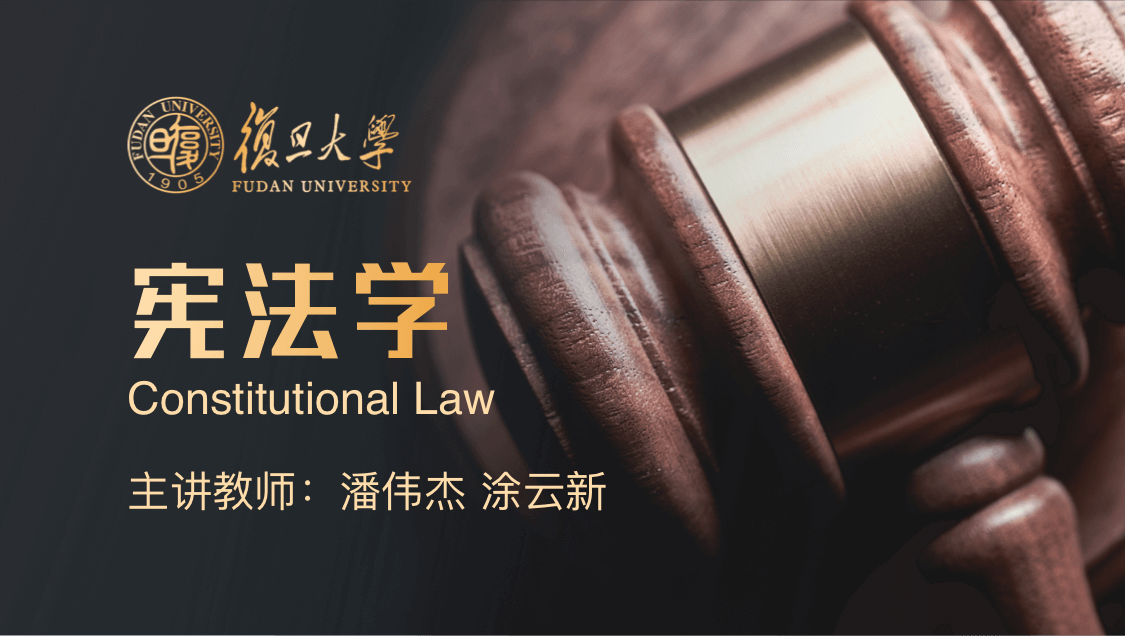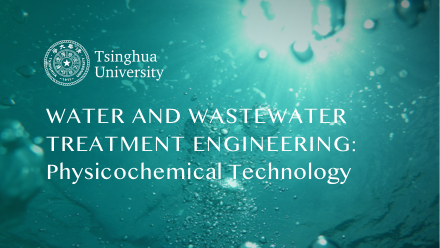
当前课程知识点:Water and Wastewater Treatment Engineering: Physicochemical Technology > Chapter 6 Ion-exchange > 6-4 Properties of anion exchange resin > 6-4 Properties of anion exchange resin
返回《Water and Wastewater Treatment Engineering: Physicochemical Technology》慕课在线视频课程列表
返回《Water and Wastewater Treatment Engineering: Physicochemical Technology》慕课在线视频列表
同学们好!在上一讲介绍了阳离子交换树脂的特性
在这一讲我们将学习阴离子交换树脂的特性
同样,我们还是先来看看阴离子交换树脂的类型
阴离子交换树脂通常是在粒状高分子化合物母体的最后处理阶段
导入各种胺基而构成的
胺基是指氨的氢原子被羟基取代的化合物
根据得到的阴离子交换树脂中碱性基团的强弱
阴离子交换树脂可分为强碱性和弱碱性两大类
强碱性阴离子交换树脂通常是季铵型的阴离子交换树脂
而弱碱性的基团包括伯胺型、仲胺型和叔胺型
这里的R是指某些简单的脂肪烃烃基,在阴离子交换树脂中可交换离子为羟基
为简单起见,阴离子交换树脂通常可表示成ROH
我们先看看强碱性阴离子交换树脂的特性
强碱性阴离子交换树脂通常用于水的除盐
放置在强酸性H离子交换树脂之后
用于去除水中的各种阴离子,如硫酸根、氯根、碳酸氢根、硅酸根
这些阴离子在经过H+交换树脂以后通常以酸的形态存在
这些反应方程表示强碱性阴离子交换树脂对水中各种阴离子的交换反应
从上述反应式来看,阴离子交换树脂出水应呈中性
但如果前端的H离子交换树脂有微量Na+泄漏的话
阴离子交换树脂出水会含有微量的NaOH,导致出水呈弱碱性
强碱性阴离子交换树脂可以用于除硅
但是在除硅过程中需要进水呈酸性
也就是说在低pH条件下除硅才能进行
这是因为在酸性条件下水中的硅酸化合物以硅酸分子的形态存在
这样就可以与强碱性树脂进行以下的交换反应
生成电离度极小的水,有利于反应向右进行
但若进水的酸性降低,则硅酸有部分就会以HSiO3-的形态存在
与强碱性树脂进行以下的交换反应
生成的NaOH强碱,会离解出大量的OH-
阻碍交换反应向右进行,从而影响强碱性树脂的除硅效果
前面,我们介绍过,强碱性阴离子交换树脂
通常与强酸性H离子交换树脂结合使用,用于除盐
如要达到理想的除硅效果,通常要求H离子交换树脂的出水钠含量比较低
如果H离子交换树脂的出水泄钠量增加
就会导致阴离子交换树脂出水碱度增加,因此会对除硅产生不利影响
强碱性阴离子交换树脂与阳离子交换树脂相比
化学稳定性比较差,主要表现在易受氧化剂的氧化而变质
特别是其中的氮被氧化后碱性逐渐变弱,交换容量降低
另外,抗有机污染物的能力较差,会导致在使用过程中交换能力逐渐降低
下面我们介绍弱碱性阴离子交换树脂的交换特性
弱碱性阴离子交换树脂有三种类型:伯胺型、仲胺型和叔胺型
但它们都只能与强酸阴离子进行交换
并且由于树脂上的活性基团在水中的离解能力弱
若水的pH值高了,则水中的OH-就会抑制交换反应的进行
因此,强酸阴离子只有以酸的形态存在时,才能与弱碱树脂进行交换反应
比如,弱碱性树脂与水中的盐酸或硫酸进行交换反应
生成电离性极小的水,反应向右进行
而如果水的pH值偏高,就会抑制离子交换反应向右进行
弱碱性阴离子交换树脂极易再生
由于树脂内部孔隙较大,抗有机污染能力较强,交换容量比较大
通常可以与强碱阴树脂联合使用
弱碱阴树脂用于去除强酸阴离子,而强碱阴树脂用于去除其他阴离子
同时,也可以联合再生,强碱阴树脂的再生废液可以用于再生弱碱阴树脂
-0-2 Water treatment process
-0-3 Wastewater treatment process
--0-3 Wastewater treatment process
-Chap 0 Homeworks
-1-1 Introduction
-1-2 Properties of colloids
-1-3 Mechanisms and process of coagulation and flocculation
--1-3 Mechanisms of coagulation and flocculation
-1-4 Coagulant and coagulant aids
-- 1-4 Coagulant and coagulant aids
-1-5 Kinetics of coagulation and flocculation
--1-5 Kinetics of coagulation and flocculation
-1-6 Factors affecting the coagulation performance
--1-6 Factors affecting the coagulation performance
-1-7 Facilities for coagulation and flocculation
--1-7 Facilities for coagulation and flocculation
-Chapter 1 Homeworks
-2-1 Introduction
-2-2 Discrete particle settling
--2-2 Discrete particle settling
-2-3 Flocculent settling
-2-4 Zone settling
-2-5 Rectangular settling tank
--2-5 Rectangular settling tanks
-2-6 Process calculation of rectangular settling tanks
--2-6 Process calculation of rectangular settling tanks
-2-7 Vertical Flow (up-flow ) and radial flow settling tank
--2-7 Vertical Flow (up-flow ) and radial flow settling tank
-2-8 Plated sedimentation tank
--2-8 Plated sedimentation tank
-2-9 Clarification pool
-3D interactive demonstration for settling tanks
-Chapter 2 Homework (part 1)
-Chapter 2 Homework (part 2)
-3-1 Introduction
-3-2 Theoretical foundation of air floatation
--3-2 Theoretical foundation of air floatation
-3-3 Pressurized dissolved air flotation
--3-3 Pressurized dissolved air flotation
-Chapter 3 Homework
-4-1 Introduction
-4-2 Structure and process of conventional rapid filter
--4-2 Structure and process of conventional rapid filter
-4-3 Water head loss of filter
--4-3 Water head loss of filter
-4-4 Filtration method of filter
--4-4 Filtration method of filter
-4-5 Filter media
-4-6 Water distribution system
--4-6 Water distribution system
-4-7 Filter backwashing
-4-8 Siphon filter
-4-9 Gravity valveless filter
--4-9 Gravity valveless filter
-4-10 Movable hood filter
-3D interactive demonstration for filtration tanks
--Usage and description for 3-D demonstration
-Chapter 4 Homework
-5-1 Introduction
-5-2 Influence factors of disinfection
--5-2 Influence factors of disinfection
-5-3 Chlorine disinfection
-5-4 Chlorine dioxide disinfection
--5-4 Chlorine dioxide disinfection
-5-5 Ultraviolet disinfection
--5-5 Ultraviolet disinfection
-Chapter 5 Homework
-6-1 Ion-exchange resin
-6-2 Properties of ion-exchange reactions
--6-2 Properties of ion-exchange reactions
-6-3 Properties of cation exchange resin
--6-3 Properties of cation exchange resin
-6-4 Properties of anion exchange resin
--6-4 Properties of anion exchange resin
-6-5 Softening system using ion exchange
--6-5 Softening system using ion exchange
-6-6 Desalination system using ion exchange
--6-6 Desalination system using ion exchange
-6-7 Ion-exchange equipment
-6-8 Treatment of industrial wastewater by ion-exchange method
--6-8 Treatment of industrial wastewater by ion-exchange method
-Chapter 6 Homework
-7-1 Introduction
-7-2 Principle and characteristics of electrodialysis
--7-2 Principle and characteristics of electrodialysis
-7-3 Configuration of electrodialysis unit
--7-3 Configuration of electrodialysis unit
-7-4 Operating parameters for electrodialysis unit
--7-4 Operating parameters for electrodialysis unit
-7-5 Principle and process of reverse osmosis
--7-5 Principle and process of reverse osmosis
-7-6 Operating parameters for reverse osmosis
--7-6 Operating parameters for reverse osmosis
-7-7 Principles and characteristics of UF and MF
--7-7 Principles and characteristics of UF and MF
-7-8 Design of ultrafiltration and microfiltration process
--7-8 Design of ultrafiltration and microfiltration process
-Chapter 7 Homework
-8-1 Fundamental knowledge and classification
--8-1 Fundamental knowledge and classification
-8-2 Ozonation
-8-3 Photo-catalytic oxidation
--8-3 Photo-catalytic oxidation
-8-4 Supercritical water oxidation
--8-4 Supercritical water oxidation
-8-5 Electrolysis
-Chapter 8 Homework
-9-1 Introduction
-9-2 Adsorption equilibrium and adsorption isotherm
--9-2 Adsorption equilibrium and adsorption isotherm
-9-3 Adsorption breakthrough curve
--9-3 Adsorption breakthrough curve
-Chapter 9 Homework



